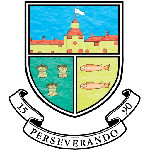History
| Mr Sandhu (Head of Team) | hsandhu@conyers.org.uk | Mrs Hawthorne | jhawthorne@conyers.org.uk |
| Mr Ahmed | wahmed@conyers.org.uk | Miss Kirk | bkirk@conyers.org.uk |
| Mr Cass | mcass@conyers.org.uk | Miss Spark | gspark@conyers.org.uk |
Key Stage 5 Curriculum Map
Curriculum Intent
Intention for KS5 is to develop the students interest in, and enthusiasm for, history and an understanding of its intrinsic value and significance. The course aims to help students acquire an understanding of different identities within society and form an appreciation of aspects such as social, cultural, religious and ethnic diversity on the human experience in both modern Britain (Unit 2S) and Russia under the Tsars and Communist rulers (Unit 1H).
Key Knowledge and Skills
The KS5 course is designed and implemented in order to help foster effective independent students who are ready to thrive in their next steps, and particularly in an undergraduate setting. The course aims to create critical and reflective thinkers with curious and enquiring minds and is designed with the aim of developing students’ ability to ask relevant and significant questions about the past and to research them. Students also develop their use and understanding of historical terms, concepts and skills and focus on being able to make links and draw comparisons within and/or across different periods and aspects of the past. Overarchingly, this course intends to develop students ability to organise and communicate their historical knowledge and understanding in different ways, arguing a case and reaching substantiated judgements.
Sequence Discussion
The course consists of three component units, two of these ‘content’ components are taught in parallel over the 2 years, using the model as advised by AQA (two teachers, one component each – runs from Sept in first year to April in second year). The long-term units and schemes of work designed here teach both of the courses chronologically over the two year structure (see below). Component three – the NEA – has an input for 5-6 weeks (one half term) at the end of the first year of study and then in moniotiered and students are mentored over the course of the second year with this. Students complete the NEA independently in their second year and submit this work (20% of their A-Level) in the March/April of the second year.
Year 12
Half Term 1
Unit 1H: Tsarist Russia
Trying to preserve autocracy
1855-94
Unit 2S: Making of Modern Britain
The Affluent Society
1951-64
Half Term 2
Unit 1H: Tsarist Russia
Trying to preserve autocracy
1855-94
Unit 2S: Making of Modern Britain
The Affluent Society / The Sixties
1951-64 (60+)
Half Term 3
Unit 1H: Tsarist Russia
Trying to preserve autocracy
1894-1917
Unit 2S: Making of Modern Britain
The Affluent Society / EOPWC
1964-70 (70+)
Half Term 4
Unit 1H: Tsarist Russia
Trying to preserve autocracy
1894-1917
Unit 2S: Making of Modern Britain
End of the Post-War Consensus
1970-79
Half Term 5
Unit 1H: Tsarist Russia
The Revolution / Revision
1917
Unit 2S: Making of Modern Britain
End of the Post-War Consensus
1970-79
Half Term 6
NEA
(Tudor Rebellions)
Year 13
Half Term 1
Unit 1H: Communist Russia
The emergence of a Communist Dictatorship
1917-41
Unit 2S: Making of Modern Britain
The Impact of Thatcherism
1979-87
NEA – Component 3
Half Term 2
Unit 1H: Communist Russia
The emergence of a Communist Dictatorship
1917-41
Unit 2S: Making of Modern Britain
The Impact of Thatcherism
1979-87
NEA – Component 3
Half Term 3
Unit 1H: Communist Russia
The Stalinist Dictatorship and reaction
1941-64
Unit 2S: Making of Modern Britain
Towards a New Consensus / The Era of New Labour
1987-97 (97+)
NEA – Component 3
Half Term 4
Unit 1H: Communist Russia
The Stalinist Dictatorship and reaction
1941-64
Unit 2S: Making of Modern Britain
The Era of New Labour
1997-2007
NEA – Component 3

